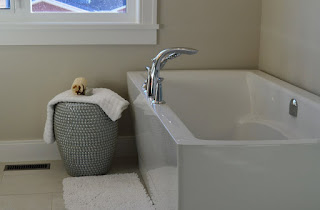An Independent Living Skills Post
Sink and bathroom drains and the kitchen garbage disposal may become clogged and unable to drain properly. They also sometimes have an unpleasant smell. Here’s how to avoid these problems using only common kitchen ingredients.
Cleaning Your Stainless Steel Sink
In addition to clogged drains, stainless steel sinks show water spots. To remove them, be sure all dishes are out of the sink and any visible food particles or other material is removed from the drain.
1. Wet a soft sponge. Sprinkle the entire sink surface with baking soda. Rub it in a circular motion to softly clean the surface.
- Baking soda
- White vinegar
- Piece of orange or lemon peel
2. Rinse the sink with a drizzle of vinegar. Baking soda and vinegar will fizz, cleaning and disinfecting at the same time.
3. Use the skin (not white) side of a piece of orange or lemon peel to rub around the entire sink. This will help deodorize the sink basin.
Cleaning the Garbage Disposal
For your safety, turn off the fuse or the source of electricity to the garbage disposal unit. You do not want it to accidentally turn on when your fingers or tools are inside!
Use tongs or chopsticks if you can to remove any material visible inside the disposal.
Flush the drain line: 1. Plug the sink.
2. Turn the fuse back on or reconnect the electricity.
3. Fill the sink with about four inches of water.
4. Turn on the disposal as you remove the sink plug. Pulling the water through the drain line should rinse it out.
If it’s still a bit slow draining:To freshen the smell of the disposal, put a few home-made disposal refresher tablets (recipe below) or some citrus rinds inside, turn on the water, and run the disposal.
1. Pour ¼ cup of baking soda into the drain.
2. Pour on 2 Tablespoons of vinegar.
3. Turn on the water.
4. Run the disposal as it fizzes for about a count of ten.

Don’t wait until a drain is clogged to clean it out. You can add this strategy to your weekly cleaning routine and avoid clogs entirely.
Weekly drain cleaning:
1. In a small bowl, stir together
2. Bring 2 cups of water to a full boil.
- ¼ cup baking soda
- ¼ cup salt
- ¼ cup cream of tartar.
3. Meanwhile, wipe around the drain with a paper towel. Clean any yucky stuff out of the drain that you can pull out with your fingers or other tools.
4. Pour half the powdered mixture down the drain. Pour in the boiling water and let it work on the pipes for about an hour. Then rinse with cool water.
5. If the drain is still a bit clogged, repeat.
For a larger clog:
1. Pour 1 cup baking soda down the drain.
2. Pour on 1 cup vinegar to create a fizz.
3. Let it set overnight.
4. In the morning, pour 2 cups boiling water down the drain.
5. Then rinse with cool water.
For the most stubborn clogs:
1. Fill the sink or tub halfway up with warm water.Home-Made Disposal Refresher Tablets Recipe
2. Use the toilet plunger to clear out the clog.
1. In a small mixing bowl, stir together the baking soda and salt. You don’t want lumps.
- 3/4 cup baking soda
- 1/2 cup salt
- 1 lemon
- 1/2 teaspoon liquid dish soap
2. Grate the lemon peel onto the dry ingredients.
3. Then add the liquid dish soap.
4. Slice the lemon in half and squeeze the juice into the bowl. Keep stirring the mixture and adding lemon juice until it resembles coarse sand. (This will take about 3 Tbsp of lemon juice.)
5. Cover a cookie sheet with parchment paper, foil, or wax paper.
6. Use a teaspoon measure or other small scoop or spoon to mold the mixture. Tap these rounds out onto the covered cookie sheet.
7. Allow the rounds to dry overnight.
8. Store the dried refresher rounds in a sealed container.

No comments:
Post a Comment
Got a Comment?